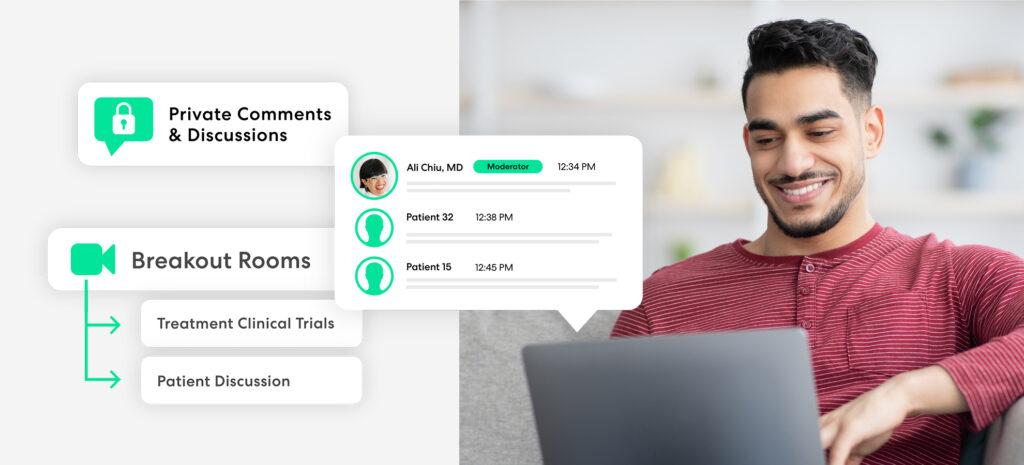During the Great Recession, Forbes reported that 59% of executives said that while their use of technology-driven meetings had increased, more than eight out of 10 said they preferred face-to-face meetings because in-person interactions build stronger, more meaningful relationships, provide the ability to “read” another person, and allow for greater social interaction. What does this mean for the future of the hybrid virtual medical congress?
Fast forward more than a decade, and we must ask ourselves if anything has changed the minds of those decision-makers as they continue to face the challenges posed by COVID-19. Medical congress events that went all-virtual in 2020 are already planning a return to business as usual, but some HCPs and life science teams believe their future congress attendance will be an equal balance of physical and virtual. And even those who prefer to attend the main event in-person may begin to conduct more pre- and post-congress activities in a virtual environment.
How will life science companies incorporate virtual tools as face-to-face medical congresses return, and how can these organizations benefit from the changes?
Expanding the role of virtual
In response to COVID-19, many organizations took immediate action and successfully transitioned their events to digital formats, while others were more risk-averse and chose to postpone pending more certainty. And there’s logic to taking a wait-and-see approach – while business travel seems expensive, companies receive about $12.50 back in revenue for every dollar they invest in travel.
As strange as virtual congress events seemed during the height of lockdowns and travel restrictions, there’s significant precedent. Recording and streaming of conference sessions for on-demand viewing have been offered by some organizations for years, and live webinars are common educational tools. But a full congress is a more complex proposition, involving a variety of session types, aimed at diverse types of attendees, with many different forms of interaction between speakers and delegates. It’s understandable that the experience doesn’t entirely translate to an all-digital format.
However, virtual platforms are advantageously positioned to play a valuable supporting role in to in-person interactions. Virtual elements like asynchronous meetings can make better use of attendees’ time before and during the event and extend the utility of physical events after they end. And those who weren’t able to attend can access content used at the event via virtual platforms on their own time.
Sizing up the virtual world
There are key benefits that virtual elements can provide when paired with a physical event, including:
- Logistical advantages: For attendees, the ability to participate virtually may make it more likely they can attend events that would otherwise require expensive travel. Virtual events are also quick to plan and can add flexibility to the agenda if last-minute additions are needed. And if asynchronous elements are used during a congress, teams are likely to get more information by collecting it in one convenient online place rather than sifting through the chaos of email chains and text messages post-event.
- Measurability: Virtual elements provide a way for organizations to measure not just attendance – who showed up to which meetings – but engagement and effectiveness. Using asynchronous and live virtual interactions before, during, and after congress events helps teams capture more insight and feedback in the moment, while thoughts and impressions are fresh in attendees’ minds.
- Free from contagion concerns and other disruptions: Virtual elements of live events are not affected by travel shutdowns or concerns of contagion in group gatherings while variants continue to emerge and countries await higher vaccination rates. And while everyone would like to put the restrictions and uncertainty of the past year behind them, the fact is that things can change quickly. Offering virtual participation in some congress activities provides a backup plan should in-person meetings be curtailed again.
The hybrid future
COVID-19 has irrevocably changed how humans interact with each other, and many of our new virtual habits are likely to stick. Life science organizations must adapt to this new reality – a reality in which digital capabilities increasingly augment traditional ways of working and interacting.
Also driving the desire for digital options are HCPs who demand content in a format, on a channel, and at a time that is convenient for them. Methods that allow discussions and interactions among new audiences, geographically diverse participants, and busy HCPs to create the same sense of community and collective learning felt during successful on-site events are the way forward – and while making this shift requires life science teams to acquire new competencies, success will help to establish a new standard for efficiency and effectiveness at modern medical congresses.
To understand how virtual elements support in-person congress attendance, read a customer success story or learn more about adding year-round virtual support to congress events.






